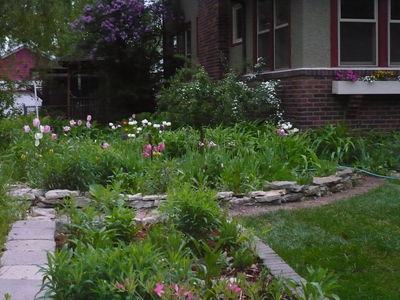
Difference between revisions of "Pollinator friendly Best Management Practices for stormwater management"
m |
m |
||
| Line 29: | Line 29: | ||
==Other links== | ==Other links== | ||
| − | *[http://www.bwsr.state.mn.us/ | + | *[http://www.bwsr.state.mn.us/native_vegetation/Pollinator_Plan.pdf The Board of Water and Soil Resources] has a Pollinator Plan that includes why pollinator populations and habitat restoration matter, current protection and restoration efforts, native seed mixes, a fact sheet and a solar site pollinator habitat assessment form. |
*[http://www.xerces.org/pollinator-conservation/gardens/ The Xerces Society]: Targeted for gardeners, this site contains much useful general information on pollinators and managing for pollinators | *[http://www.xerces.org/pollinator-conservation/gardens/ The Xerces Society]: Targeted for gardeners, this site contains much useful general information on pollinators and managing for pollinators | ||
*[http://www.pollinatorfriendly.org/ Pollinator Friendly Alliance] | *[http://www.pollinatorfriendly.org/ Pollinator Friendly Alliance] | ||
Revision as of 19:57, 10 August 2016
An increasing focus on Green Infrastructure has brought an awareness that stormwater management can provide numerous benefits beyond improving water quality and urban hydrology. Trees, for example, provide a multitude of benefits beyond stormwater management, as discussed in this article. In particular, vegetated stormwater best management practices (BMPs), including tree-based systems and other bioretention systems, offer opportunities to achieve multiple benefits, ranging from aesthetics (see, for example, this presentation by Dr. Steven Rodie from the University of Nebraska - Omaha) to ecosystem friendly designs.
Vegetated stormwater BMPs can be designed to be pollinator-friendly. It is clear that pollinators, both vertebrates and invertebrates, are in decline (see [1], [2], [3], [4], [5]). This page provides numerous links to information that can be used in designing and implementing pollinator-friendly stormwater BMPs.
Pollinator friendly plants
- Metro Blooms: Planting for Pollinators: How Raingardens Can Help
- The Xerces Society for Invertebrate Conservation: Pollinator plants - Great Lakes Region
- Pollinator Partnership: Ecoregional Planting Guides
- United States Department of Agriculture - Forest Service: Attracting Pollinators to Your Garden Using Native Plants
- National Wildlife Federation: Plants for Pollinators: A Collection of Favorites
- Native Plants and Wildlife Gardens: Top Five Wetland Edge Plants For Pollinators
- Deeproot: Want Pollinators? Plant Trees
Pollinator friendly practices
Although much of the information on these pages is general, many of the practices can be incorporated into vegetated stormwater BMPs.
- United States Department of Agriculture - Forest Service: Pollinator Friendly Practices
- North American Pollinator Protection Campaign: Pollinator Friendly Practices
- Institute for Agriculture and Trade Policy: A landowner’s guide to pollinator-friendly practices
Case studies
- Andover garden tour is a pollinator-friendly showcase
- Andover Pollinator Awareness Project
- Penn State Extension
- Penn State University: Pollinator Garden Certification
Other links
- The Board of Water and Soil Resources has a Pollinator Plan that includes why pollinator populations and habitat restoration matter, current protection and restoration efforts, native seed mixes, a fact sheet and a solar site pollinator habitat assessment form.
- The Xerces Society: Targeted for gardeners, this site contains much useful general information on pollinators and managing for pollinators
- Pollinator Friendly Alliance
